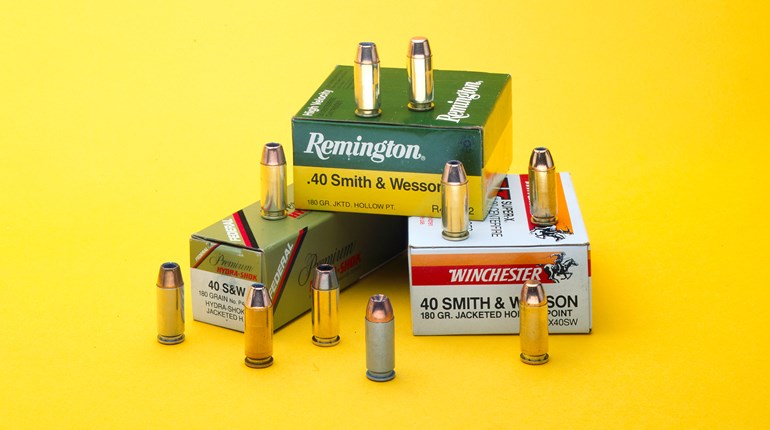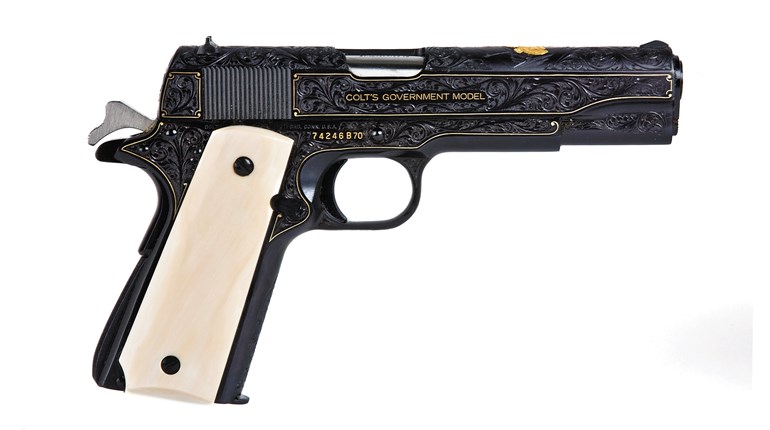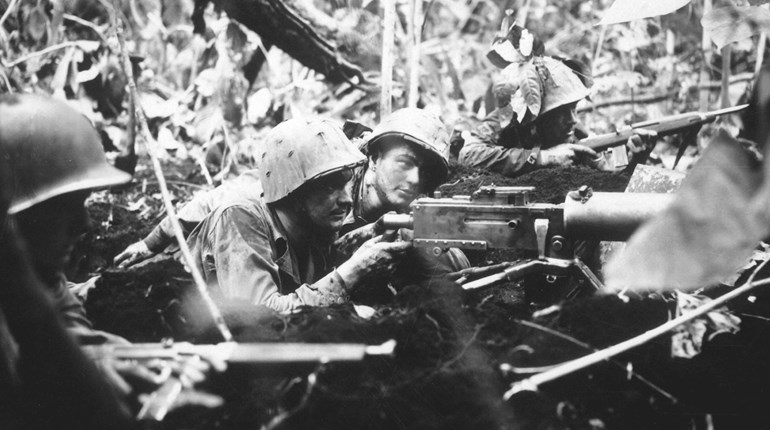
Every Marine is a rifleman, as the saying goes. It happens to be true, whether the Marine in question is a veteran or on active duty. The Corps always takes great pride in marksmanship, regardless of the issued rifle.
If there’s anything the Marines take seriously, it’s the rifle. There’s a story about the bedazzled full-bird Colonel of Marines who was asked what he did in the Corps. His clipped response was epic: “I’m a rifleman—presently assigned to flying F-4 jets.”
Colonels do not begin their careers as colonels, but rather as second lieutenants and sometimes as privates. It’s fair to assume that somewhere in that man’s past, he had to endure a profane tirade from a grizzled veteran who had about his person the smell of chewing tobacco and Cosmoline. Said person had a great many red stripes on his arms and cold fury in his heart for anyone insufficiently motivated to master the wisdom he was dispensing.
He was the senior instructor on the rifle range, and the traditions and techniques of this warrior skill were as basic as right face. Beyond the obvious value of having men armed with rifles hyper-competent in their use, there are other reasons why the time and effort are well spent. With a few exceptions, everybody in the Marine Corps qualifies with the rifle every year. In most cases, qualifying means going to the rifle range for a week of practice. Shooting a course for record occurs on Friday of that week. Shooters are ranked by score as Marksman, Sharpshooter or Expert. The procedure results in a shooting medal worn on the dress and service uniforms. Interestingly, you find even generals wearing their shooting medals with pride. In actual practice, General Hardnose may use Marines of lesser rank to shoot enemy soldiers for him—but he is perfectly capable of doing it himself.
When I entered the Marine Corps in 1957, these were the traditions and customs of that service, and I bought into it enthusiastically. I qualified the first time at Quantico, followed the next year by another with the 3rd Marines on Okinawa. By 1960, I was at the Cold Weather Training Center in California’s Eastern Sierra Mountains. For qualification, we traveled over into Nevada to the Naval Ammunition Depot at Hawthorne. This was a huge base, with literally hundreds of storage bunkers for ammo; everything from .22 LR to 16-inch battleship-gun shells. They also had room for a small rifle range.
At this point in history, “rifle” meant the Garand, as designed primarily by the venerable John C. Garand at the Springfield Armory in Massachusetts and officially dubbed the M1. Early on, the gas-operated semi-automatic was viewed with suspicion. Hard use in combat eventually built a positive reputation for the service M1. Preparing to make the trek to Hawthorne, I needed a respectable specimen of the M1 with which to demonstrate my continued proficiency. All rifles have their own personality, and this one was no exception. One of the instructors in my Escape and Evasion section was SSgt. Herb Acree, well known on the base as a fine rifle shot.
I borrowed his rifle for the week at Hawthorne. He had used the same M1 to qualify the previous month and had even loaned it to other instructors for their range trips. It was a completely regulation M1 rifle in every way, with no unauthorized modifications. But, it was an unusually accurate specimen of the breed. I fired the qualification course with SSgt. Acree’s M1 with complete satisfaction and was shooting very well as I prepared for firing for record. Then, as I finished a string 10 rounds of rapid fire one morning, I glanced down at the receiver of Acree’s rifle and got the shock of my life.
The receivers of all M1 rifles are marked with the maker and the serial (identification) number. This one was marked Springfield for the government arsenal in the Massachusetts city. This is often seen, but the serial number is another story.
Acree’s rifle had a three-digit serial number, and, to my everlasting regret, I cannot recall what it was. I think it was in the 200 to 300 range, but I am just not sure. It was probably not originally shipped to the Marine Corps, but any Marine who ever had cause to fire the rifle came away with respect. Also, the rifle I fired that day had probably been through the arsenal system several times. It is possible that many parts had been replaced and not much more than the receiver was original.
This happened in 1960. The rifle was made in 1937, in the first week of production—and possibly the first day. A story like this is just part of that Rifleman culture I was talking about. There is no way to track where that Garand had been—or what it had done. Sergeant Acree was amused with the rifle issued to him, one of the first ever made.
I fired Expert the next day, nothing else would do for this fine example of fightin’ iron.




































